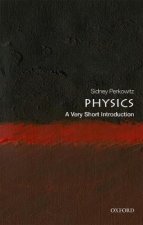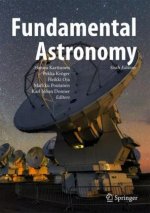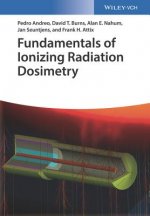
Code: 01974614
Reuven Ramaty High Energy Solar Spectroscopic Imager (RHESSI) - Mission Description and Early Results
by Robert P. Lin, Brian R. Dennis, Arnold O. Benz
The Reuven Ramaty High Energy Solar Spectroscopic Imager (RHESSI) satellite was launched on 5 February 2002. Its objective is to study the energy release and particle acceleration in solar flares through observations of X-rays and ... more
- Language:
 English
English - Binding: Paperback
- Number of pages: 456
Publisher: Springer, 2010
- More about this

214.64 €

Low in stock at our supplier
Shipping in 12 - 17 days
Potřebujete více kusů?Máte-li zájem o více kusů, prověřte, prosím, nejprve dostupnost titulu na naši zákaznické podpoře.
Add to wishlist
You might also like
Give this book as a present today
- Order book and choose Gift Order.
- We will send you book gift voucher at once. You can give it out to anyone.
- Book will be send to donee, nothing more to care about.
More about Reuven Ramaty High Energy Solar Spectroscopic Imager (RHESSI) - Mission Description and Early Results
You get 530 loyalty points
 Book synopsis
Book synopsis
The Reuven Ramaty High Energy Solar Spectroscopic Imager (RHESSI) satellite was launched on 5 February 2002. Its objective is to study the energy release and particle acceleration in solar flares through observations of X-rays and gamma rays. Two novel technologies are combined to obtain both spectra and images over a broad energy range. For the spectroscopy, cooled hyperpure germanium detectors are used to cover the energy range from 3 keV to 17 MeV with unprecedented keV-class resolution. Since focusing optics are not possible for making images with such high energy photons, tungsten and molybdenum absorbing grids are used to modulate the X-rays and gamma-rays coming from the Sun as the spacecraft rotates. This allows the spatial Fourier components of the source to be determined so that images can be made in spectral ranges where astronomical images have never been produced before. These new instrumental techniques require equally innovative software to reconstruct X-ray and gamma-ray spectra and images from the observations. §Ample solar activity, abundant observations, and an open data policy have attracted many researchers. Astronomers face in the RHESSI mission an exciting new scientific potential. It has unusually broad possibilities for improving our understanding of the enigmatic solar flare phenomenon that is becoming increasingly important as society depends more and more on space-based technologies. §In this volume, the functioning of RHESSI is explained, the data analysis techniques including spectroscopy and image reconstruction are introduced, and the experiences of the first few months of operation are summarized. First scientific results are presented that provide the essential base for more extended studies using RHESSI data and complementary observations by instruments on other spacecraft and at ground-based solar observatories.Scientists and students will find here the latest discoveries in solar flare research, as well as inspiration for future work. The papers will serve as references for the many new discoveries to come from the continuing RHESSI observations.The Reuven Ramaty High Energy Solar Spectroscopic Imager (RHESSI) satellite was launched on 5 February 2002. Its objective is to study the energy release and particle acceleration in solar flares through observations of X-rays and gamma rays. Two novel technologies are combined to obtain both spectra and images over a broad energy range. For the spectroscopy, cooled hyperpure germanium detectors are used to cover the energy range from 3 keV to 17 MeV with unprecedented keV-class resolution. Since focusing optics are not possible for making images with such high energy photons, tungsten and molybdenum absorbing grids are used to modulate the X-rays and gamma-rays coming from the Sun as the spacecraft rotates. This allows the spatial Fourier components of the source to be determined so that images can be made in spectral ranges where astronomical images have never been produced before. These new instrumental techniques require equally innovative software to reconstruct X-ray and gamma-ray spectra and images from the observations.§Ample solar activity, abundant observations, and an open data policy have attracted many researchers. Astronomers face in the RHESSI mission an exciting new scientific potential. It has unusually broad possibilities for improving our understanding of the enigmatic solar flare phenomenon that is becoming increasingly important as society depends more and more on space-based technologies. §In this volume, the functioning of RHESSI is explained, the data analysis techniques including spectroscopy and image reconstruction are introduced, and the experiences of the first few months of operation are summarized. First scientific results are presented that provide the essential base for more extended studies using RHESSI data and complementary observations by instruments on other spacecraft and at ground-based solar observatories.Scientists and students will find here the latest discoveries in solar flare research, as well as inspiration for future work. The papers will serve as references for the many new discoveries to come from the continuing RHESSI observations.
 Book details
Book details
Book category Knihy po anglicky Mathematics & science Physics Applied physics
214.64 €
- Full title: Reuven Ramaty High Energy Solar Spectroscopic Imager (RHESSI) - Mission Description and Early Results
- Author: Robert P. Lin, Brian R. Dennis, Arnold O. Benz
- Language:
 English
English - Binding: Paperback
- Number of pages: 456
- EAN: 9789048162123
- ISBN: 9048162122
- ID: 01974614
- Publisher: Springer
- Weight: 712 g
- Dimensions: 235 × 155 × 25 mm
- Date of publishing: 01. December 2010
Trending among others
-

Astrophysics for People in a Hurry
16.38 € -19 % -

Stellar Evolution, Nuclear Astrophysics, and Nucleogenesis
15.66 € -3 % -

CO2 Laser Surgery
70.86 € -

Life on the Edge
10.95 € -24 % -

Geophysics: A Very Short Introduction
11.66 € -18 % -

Lectures on Astrophysics
58.98 € -

Schaum's Outline of Applied Physics, 4ed
38.19 € -

Atlas of Antarctica
45.87 € -19 % -

Revolutions that Made the Earth
51.71 € -

Welcome to the Universe
37.78 € -8 % -

Introduction to Modern Astrophysics
95.54 € -

MoonFire
22.83 € -

Feynman's Lost Lecture
10.13 € -23 % -

Geology: A Complete Introduction: Teach Yourself
16.58 € -23 % -

Black Holes: A Very Short Introduction
11.56 € -19 % -

Physics: A Very Short Introduction
10.13 € -23 % -

Our Cosmic Habitat
21.60 € -

Origin and Nature of Life on Earth
48.33 € -12 % -

Fundamentals of Fluorescence Microscopy
71.98 € -

Astrophysics: A Very Short Introduction
10.13 € -23 % -

Physics in Biology and Medicine
123.80 € -

Fundamental Astronomy
95.64 € -

Cosmology: A Very Short Introduction
11.56 € -19 % -

Chasing New Horizons
27.74 € -9 % -

Principles of Planetary Climate
94.82 € -

Black Holes, Wormholes and Time Machines
62.46 € -

Advances in Meteorology, Climatology and Atmospheric Physics
363.44 € -

Student's Guide to Special Relativity
32.25 € -

Exoplanets
26.92 € -

Stephen Hawking
16.58 € -23 % -

Environmental Physiology of Animals 2e
183.61 € -

Creation Of The Universe
44.95 € -

Water: A Very Short Introduction
10.13 € -23 % -

Galaxies: A Very Short Introduction
10.13 € -23 % -

Cell Biology by the Numbers
63.38 € -

Student's Guide to Atomic Physics
30.41 € -

Atmosphere: A Very Short Introduction
11.56 € -19 % -

Biophysics For Dummies
19.65 € -18 % -

Student's Manual for A First Course in General Relativity
42.08 € -

Stars: A Very Short Introduction
11.66 € -18 % -

First Course in General Relativity
87.24 € -

Introduction to Cosmology
54.78 € -7 % -

Galactic Dynamics
133.12 € -

University Physics
37.37 € -15 % -

Astrophysics through Computation
106.70 € -

Exact Space-Times in Einstein's General Relativity
122.57 € -

Fundamentals of Ionizing Radiation Dosimetry
194.46 € -4 % -

Stars and Stellar Processes
89.39 € -

Astrophysics for Physicists
92.67 €
Osobný odber Bratislava a 2642 dalších
Copyright ©2008-24 najlacnejsie-knihy.sk Všetky práva vyhradenéSúkromieCookies





 21 miliónov titulov
21 miliónov titulov Vrátenie do mesiaca
Vrátenie do mesiaca 02/210 210 99 (8-15.30h)
02/210 210 99 (8-15.30h)